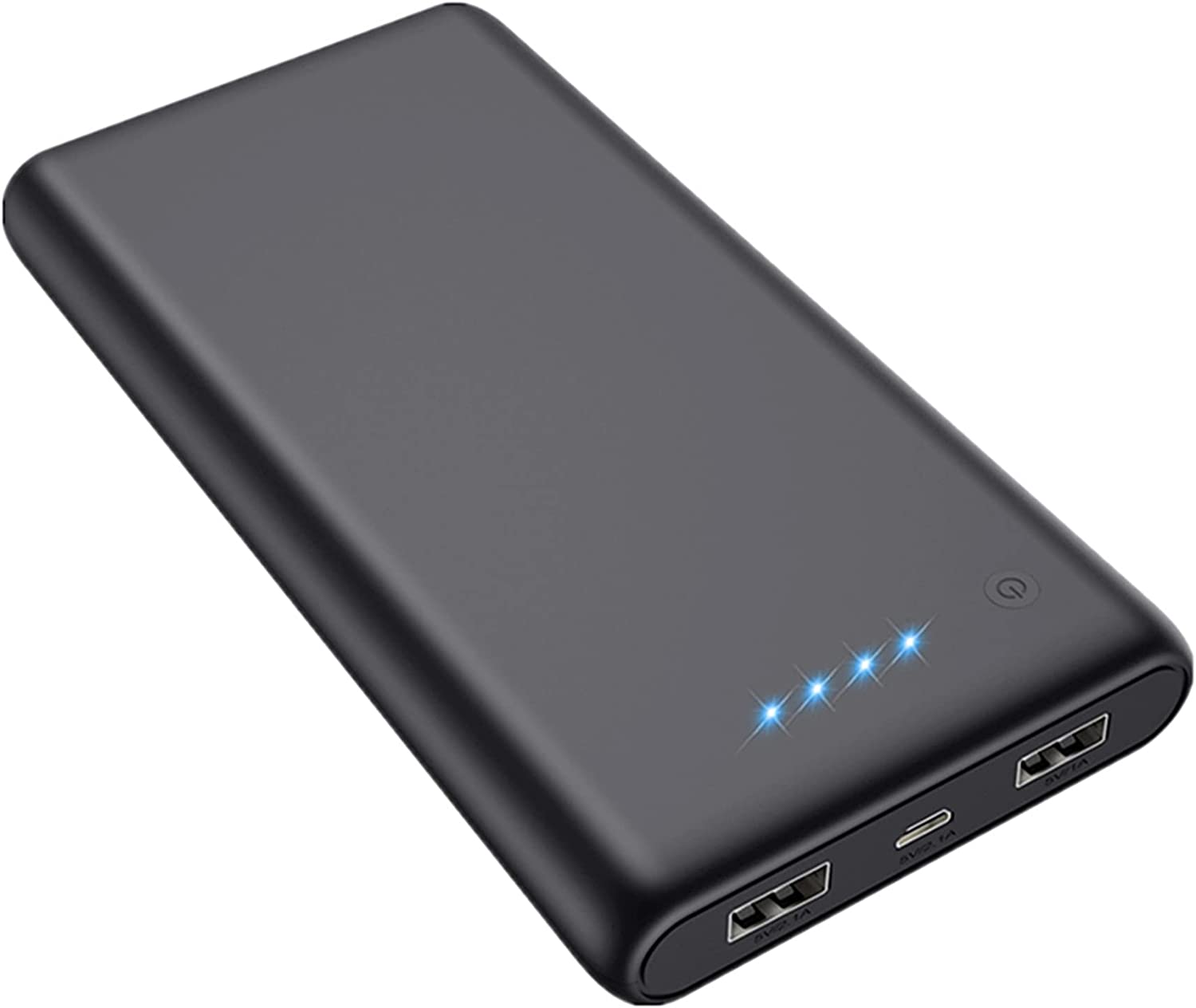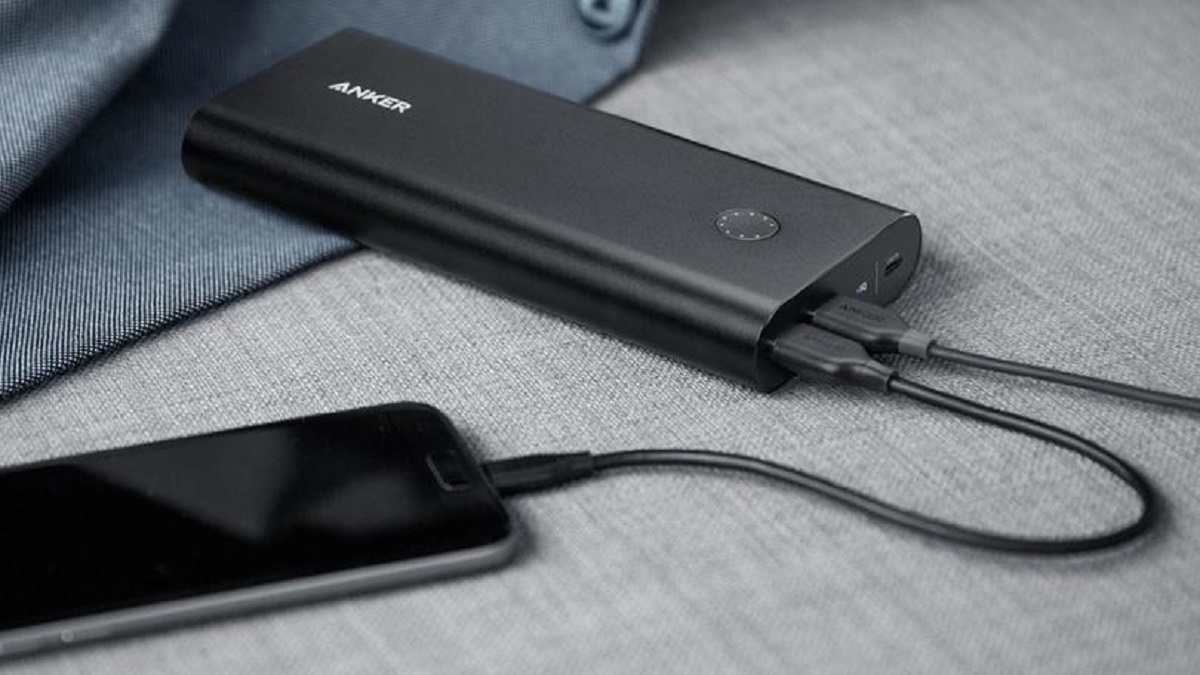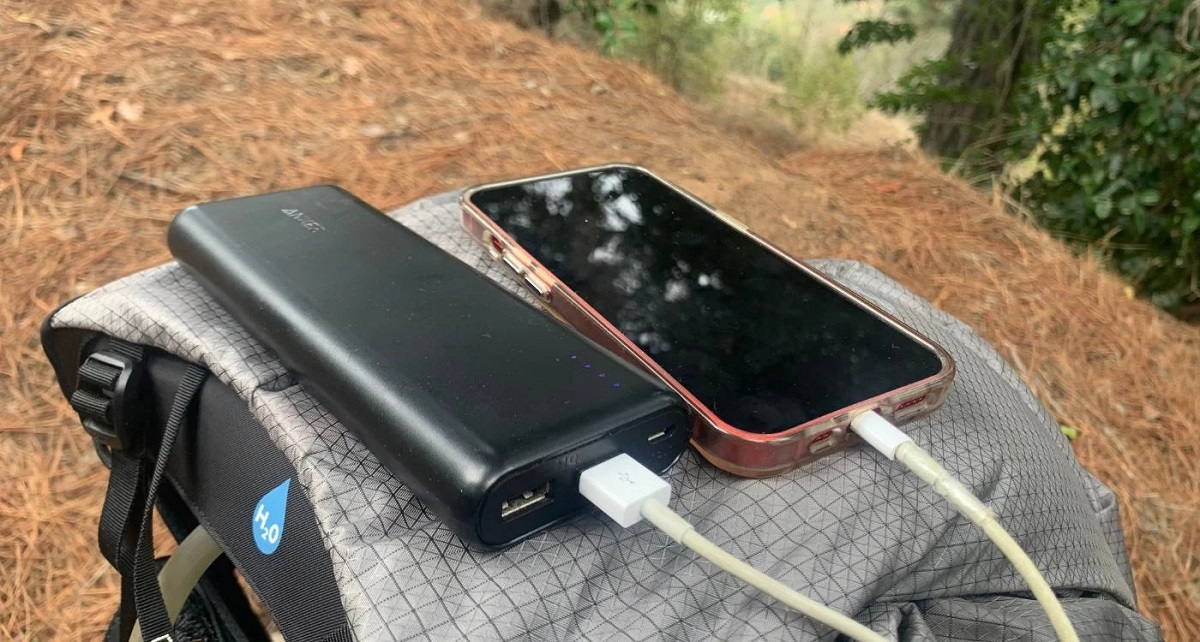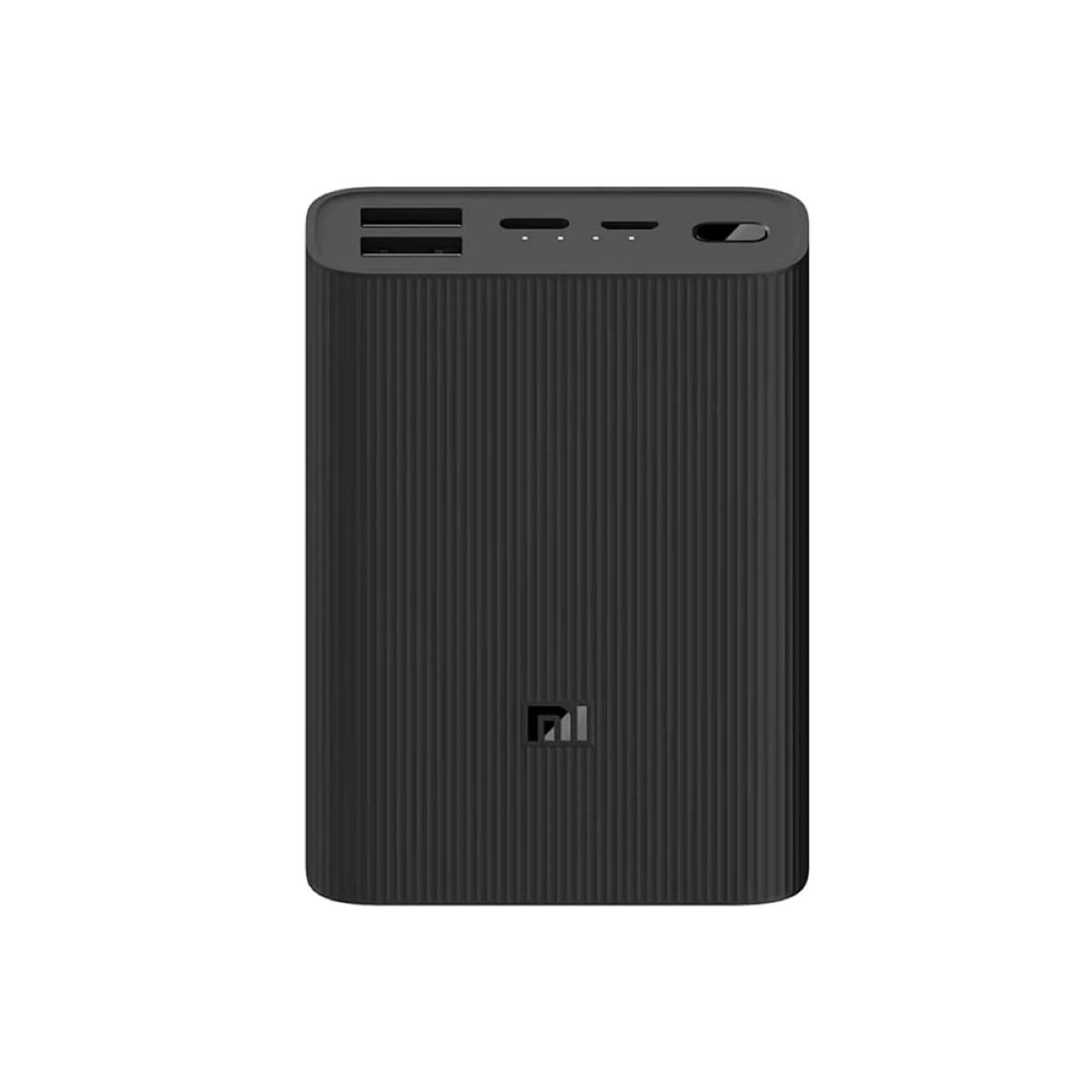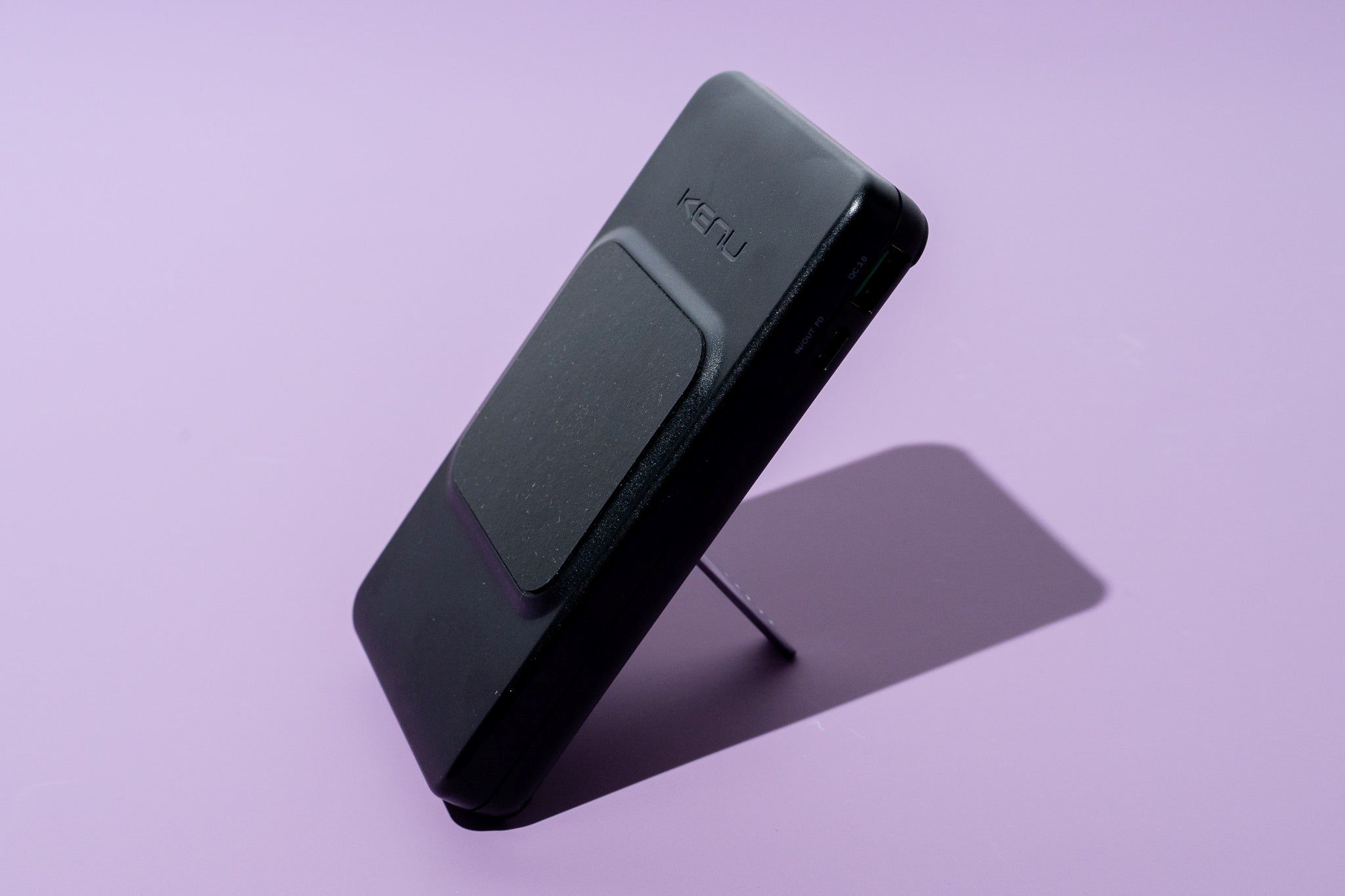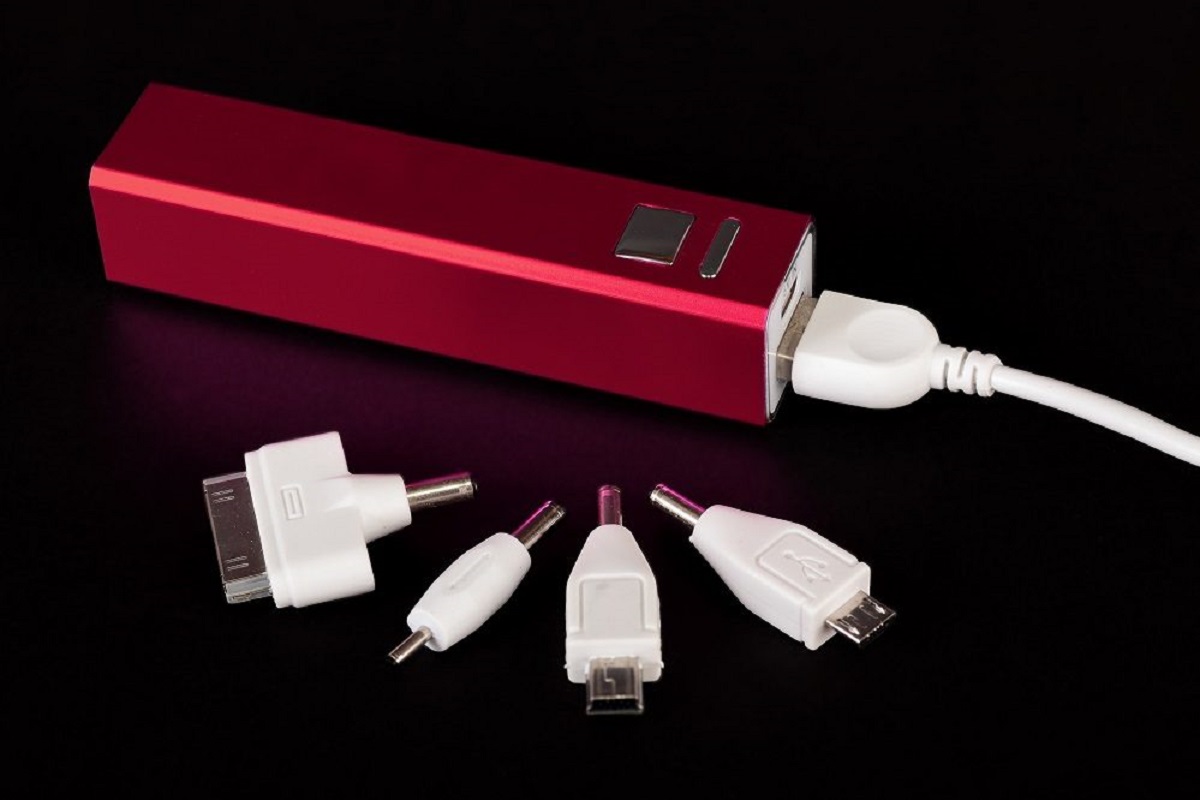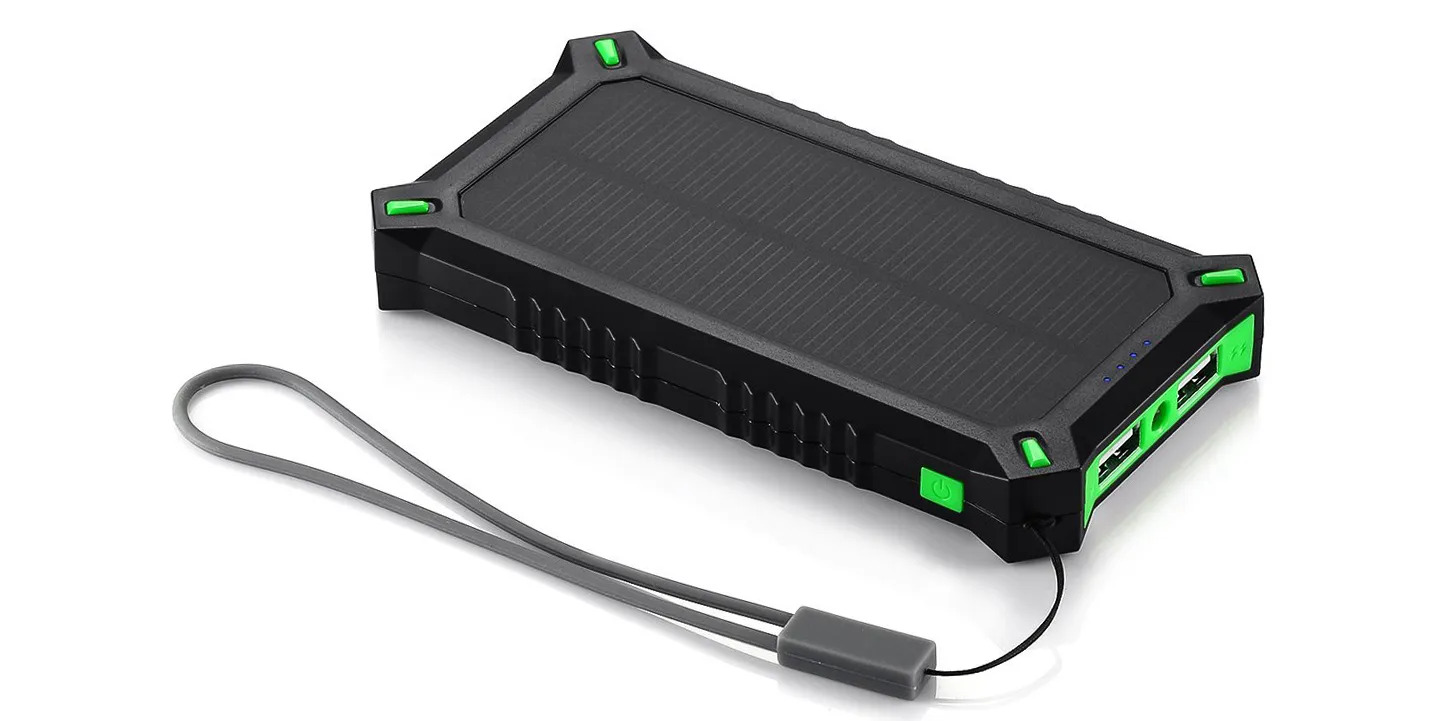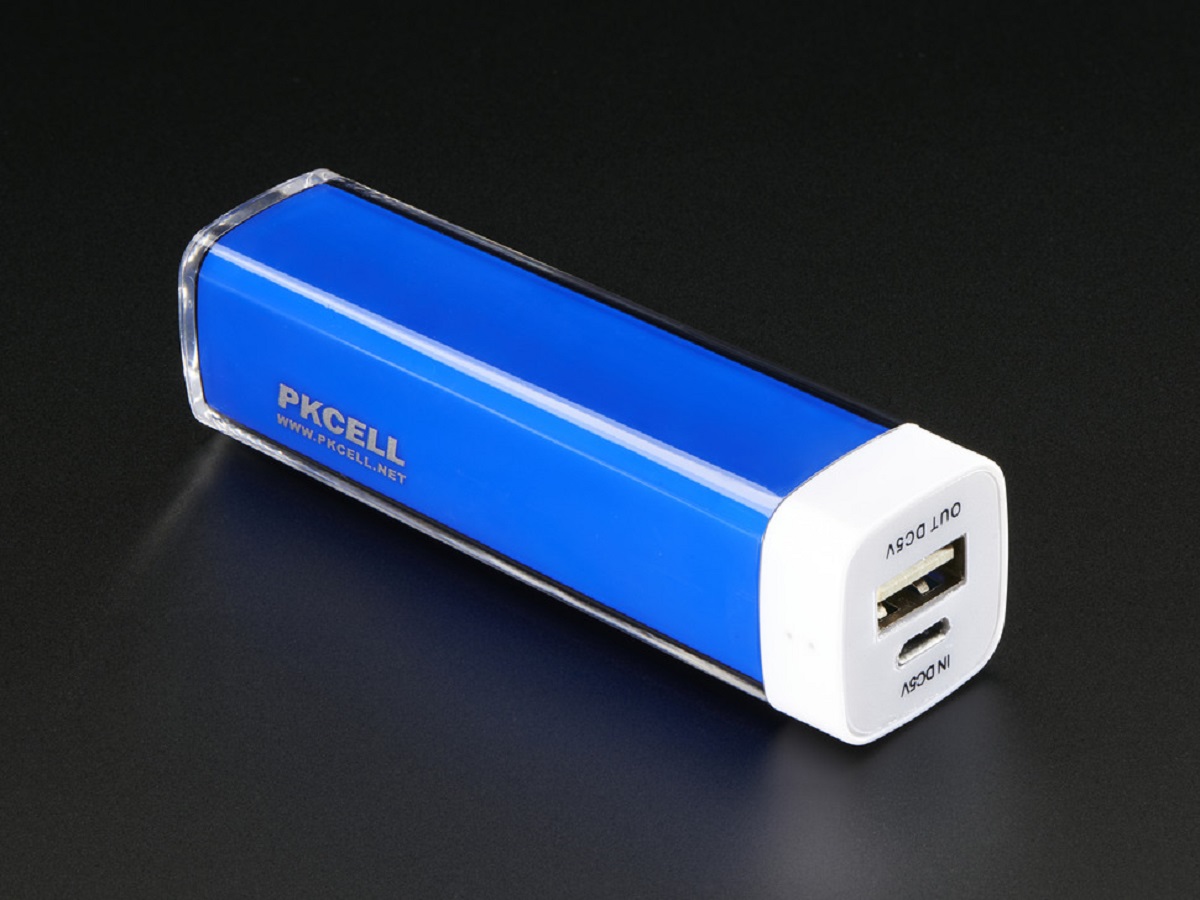Introduction
Power banks have become a necessity in today’s fast-paced, technology-driven world. With our increasing reliance on smartphones, tablets, and other portable devices, having a reliable source of backup power has become essential. Simply put, a power bank is a portable device that allows you to charge your electronic devices on-the-go.
Whether you’re traveling, commuting, or simply away from a power outlet, a power bank provides the convenience and peace of mind of knowing that you can stay connected without worrying about running out of battery.
But with so many options available in the market, how do you choose the right power bank for your needs? One of the key factors to consider is the capacity of the power bank.
In this article, we will delve into the importance of capacity in a power bank and help you determine what is considered a good capacity for your charging needs. We will also discuss the factors you should consider when determining the capacity you need, and highlight the common capacities available in power banks today.
So whether you’re a frequent traveler, a busy professional, or someone who likes to stay connected on-the-go, read on to discover how to choose the right capacity power bank to keep your devices fully charged and ready for action.
What is a Power Bank?
A power bank, also known as a portable charger or external battery pack, is a compact and portable device that allows you to store electrical energy and use it to charge your electronic devices, such as smartphones, tablets, smartwatches, and more.
Power banks typically consist of a lithium-ion or lithium-polymer battery, circuitry, and one or more USB ports for connecting your devices. The battery within the power bank is charged by plugging it into a power source, such as a wall outlet or a computer, using the provided charging cable.
Once the power bank is fully charged, you can then carry it with you and use it to charge your devices whenever you need to, without the need for a power outlet. This makes power banks an incredibly convenient accessory, especially when you’re on the move or in situations where access to electricity is limited.
Power banks come in various sizes, shapes, and designs. Some are small and lightweight, designed to be easily portable and fit in your pocket, while others are larger and offer more charging capacity. They may also come with additional features such as multiple USB ports, built-in cables, LED indicators, and even wireless charging capabilities.
Overall, power banks are a versatile and indispensable accessory for anyone who relies heavily on their electronic devices throughout the day. Whether you’re a frequent traveler, a student, an outdoor enthusiast, or simply someone who wants to stay connected without worrying about battery life, a power bank is a must-have gadget.
Why Do You Need a Power Bank?
In today’s digital age, our reliance on electronic devices has significantly increased. We use smartphones to communicate, tablets to work or entertain ourselves, and smartwatches to track our daily activities. However, all these devices have one common limitation – limited battery life.
That’s where a power bank becomes indispensable. Here are a few reasons why you need a power bank:
- Emergency Charging: When you’re on the go and your phone battery is about to die, having a power bank allows you to charge your device and stay connected even when there’s no power outlet nearby.
- Travel Companion: Whether you’re going on a long flight, a road trip, or exploring a new city, a power bank ensures that your devices remain charged throughout your journey. You can use your smartphone for navigation, capture photos, or stay connected without worrying about running out of battery.
- Outdoor Adventures: If you enjoy outdoor activities such as camping, hiking, or biking, having a power bank is essential. It provides you with a reliable source of power to keep your devices charged, whether it’s for emergencies, capturing breathtaking photos, or staying connected with your group.
- Work and Productivity: In a professional setting, a power bank can be a lifesaver. It allows you to keep your devices charged, ensuring that you don’t miss important calls, emails, or deadlines. It’s particularly useful when you’re attending conferences, meetings, or working remotely.
- Entertainment on the Go: Whether it’s watching movies, listening to music, or playing games, using your smartphone or tablet as a source of entertainment drains battery quickly. A power bank gives you the freedom to enjoy your favorite content without worrying about the device dying in the middle of your enjoyment.
By having a power bank, you eliminate the anxiety and inconvenience of having a low battery or no battery at all. You can stay connected, productive, and entertained wherever you are, without the limitations imposed by limited battery life on your devices.
In a nutshell, a power bank gives you the freedom and peace of mind to use your electronic devices without the constant worry of running out of battery. It’s a small investment that brings big convenience and ensures you’re always powered up on the go.
Factors to Consider When Buying a Power Bank
When it comes to purchasing a power bank, there are several important factors to consider. These factors will help you choose the right power bank that suits your needs and ensures optimal charging performance. Here are the key factors to keep in mind:
- Capacity: The capacity of a power bank is measured in milliampere-hours (mAh) and indicates how much energy it can store. The higher the capacity, the more charges you can get out of the power bank. Consider the capacity of your devices’ batteries and your charging requirements to determine the ideal capacity for your power bank.
- Output Voltage and Current: Different devices require different voltage and current ratings for optimal charging. Ensure that the power bank you choose offers compatible output voltage and current to charge your devices efficiently.
- Number of USB Ports: If you have multiple devices or if you frequently travel with others who may need to charge their devices, consider a power bank with multiple USB ports. This allows you to charge multiple devices simultaneously.
- Charging Speed: Pay attention to the power bank’s charging speed, which is usually indicated in Amps (A). Higher charging speeds allow for quicker recharging of the power bank and faster charging of your devices.
- Size and Weight: Consider the portability of the power bank. If you plan on carrying it in your pocket or bag, a lightweight and compact design will be more convenient.
- Build Quality: Look for a power bank that is sturdy and durable, as it will be subjected to regular use and occasional impacts. Check for features like high-quality materials, protective casing, and robust construction.
- Additional Features: Some power banks come with extra features such as built-in cables, LED indicators, pass-through charging, and even wireless charging capability. Assess your needs and preferences to determine which additional features are important to you.
By considering these factors, you can make an informed decision and choose a power bank that aligns with your charging requirements and lifestyle. Remember to prioritize the factors that are most important to you, whether it’s capacity, portability, or additional features, to find the perfect power bank that meets your needs.
The Importance of Capacity in a Power Bank
When it comes to power banks, capacity plays a crucial role in determining their usefulness and effectiveness. The capacity of a power bank refers to the amount of energy it can store and deliver to charge your devices. Understanding the importance of capacity will help you choose a power bank that can meet your charging needs. Here are a few key reasons why capacity matters:
- Charging Cycles: The capacity of a power bank determines the number of charging cycles it can provide. A charging cycle refers to using up the entire capacity of a power bank and then recharging it back to full. The higher the capacity, the more charging cycles you can get out of the power bank before it needs recharging.
- Longer Usage Time: Higher capacity power banks can provide longer usage time for your devices. For example, if you have a smartphone with a 3000mAh battery, a power bank with a capacity of 10,000mAh can charge it multiple times before needing to be recharged itself. This is particularly useful when you’re traveling or in situations where access to a power outlet is limited.
- Compatibility: Different devices have different battery capacities. It’s important to ensure that the power bank’s capacity is sufficient to fully charge your devices. Choosing a power bank with a capacity that matches or exceeds your device’s battery capacity ensures that you can recharge your device completely and avoid running out of battery power unexpectedly.
- Flexibility: Power banks with higher capacities offer more flexibility in terms of charging multiple devices or charging a single device multiple times. They provide the convenience of being able to charge your smartphone, tablet, smartwatch, or other devices without worrying about the power bank running out of juice quickly.
- Future-proofing: As new devices are released with larger batteries and power-hungry features, having a power bank with a higher capacity ensures that you can meet the charging demands of future devices. It allows you to future-proof your charging solution, ensuring that you won’t need to upgrade your power bank frequently.
Considering the importance of capacity in a power bank is essential for making the right choice. By understanding your charging needs, the devices you plan to charge, and your usage patterns, you can determine the appropriate capacity that will provide sufficient power to keep your devices charged and ready for use whenever and wherever you need them.
What is a Good Capacity for a Power Bank?
When it comes to determining a good capacity for a power bank, there is no one-size-fits-all answer. The best capacity for a power bank depends on your specific charging needs and the devices you plan to charge. However, there are a few general guidelines to consider:
Device Battery Capacity:
A good starting point is to consider the capacity of the batteries in the devices you intend to charge. Most smartphones have battery capacities ranging from 2000mAh to 4000mAh, while tablets and laptops have larger battery capacities. Ideally, you’ll want a power bank with a capacity that exceeds the device’s battery capacity to fully charge it at least once.
Multiple Device Charging:
If you carry multiple devices or often find yourself in situations where you need to charge multiple devices simultaneously, consider a power bank with a higher capacity. This ensures that you have enough power to keep all your devices charged without frequently needing to recharge the power bank itself.
Travel and Portability:
If you frequently travel or need a power bank for on-the-go charging, consider a balance between capacity and portability. Higher capacity power banks are generally larger and heavier, making them less portable. However, smaller power banks may not provide enough capacity for extended trips. Aim for a power bank that strikes a balance between capacity and portability, depending on your specific needs.
Usage Patterns and Charging Frequency:
Consider your typical usage patterns and how often you’ll need to rely on the power bank. If you frequently use power-intensive apps, travel frequently, or require extended charging sessions, a higher capacity power bank will be beneficial to ensure you have ample power to last through the day.
Budget:
Lastly, consider your budget when determining the capacity of a power bank. Higher capacity power banks tend to be more expensive. Evaluate your charging needs and budget to find a power bank that strikes the right balance for you.
In general, a good capacity for a power bank ranges from 10,000mAh to 20,000mAh, as it provides sufficient power to charge most smartphones and other electronic devices multiple times. However, if you have larger battery capacity devices or have specific power requirements, you may need to consider power banks with even higher capacities.
By considering these factors and aligning them with your charging needs and preferences, you can determine the optimal capacity for a power bank that suits your lifestyle and ensures you have reliable backup power whenever you need it.
Factors to Consider When Determining the Capacity You Need
Choosing the right capacity for your power bank is crucial to ensure that it meets your charging needs effectively. To determine the capacity you need, there are several key factors to consider:
Device Battery Capacity:
Consider the battery capacities of the devices you plan to charge with the power bank. If you primarily use smartphones with battery capacities around 3000mAh, a power bank with a capacity of 10,000mAh should be sufficient to charge your phone multiple times before needing to recharge the power bank.
Charging Requirements:
Take into account your charging requirements, such as how many devices you need to charge simultaneously and how frequently you’ll need to rely on the power bank. If you often charge multiple devices or have power-hungry devices like tablets or laptops, you may need a higher capacity power bank to ensure you have enough power.
Usage Frequency and Duration:
Consider how often you’ll need the power bank and for how long. If you travel frequently or spend extended periods away from power outlets, a higher capacity power bank is recommended to sustain your charging needs throughout the day or even multiple days.
Emergency Situations:
If you anticipate using the power bank primarily for emergencies or situations where access to a power outlet is limited, consider a power bank with a higher capacity. This ensures that you have sufficient backup power to keep your devices running until you can recharge the power bank.
Budget:
It’s important to balance your capacity needs with your budget. Higher capacity power banks tend to be more expensive. Evaluate your charging requirements and budget to find a power bank that offers sufficient capacity without exceeding your financial limits.
Future-proofing:
Consider the potential growth in battery capacities of future devices. If you foresee upgrading to devices with larger batteries, it may be wise to invest in a power bank with a higher capacity to accommodate these future charging needs.
By carefully considering these factors, you can determine the capacity you need to ensure that your power bank provides reliable and sufficient backup power for your devices. Remember, it’s better to have a power bank with a slightly higher capacity than to be left with insufficient power when you need it the most.
Common Capacities Available in Power Banks
Power banks come in various capacities to cater to a wide range of charging needs. Here are some of the common capacities available in power banks:
1. 2,000mAh – 5,000mAh:
Power banks in this capacity range are typically compact and lightweight, making them highly portable. They are suitable for emergency charging or when you only need to top up the battery of your device. They can provide approximately one full charge for most smartphones with average battery capacities.
2. 5,000mAh – 10,000mAh:
Power banks in this capacity range offer a balance between portability and charging capability. They can recharge smartphones multiple times and can also charge tablets or other devices with smaller battery capacities. These power banks are ideal for everyday use and are a popular choice among casual users.
3. 10,000mAh – 20,000mAh:
This is the most common capacity range for power banks as it strikes a balance between capacity and portability. Power banks in this range can provide multiple charges for smartphones and tablets. They are suitable for frequent travelers, outdoor enthusiasts, and individuals who rely heavily on their devices throughout the day.
4. 20,000mAh and above:
Power banks with capacities of 20,000mAh and above are typically larger and heavier. They offer even more charging capacity, making them suitable for those who require extended backup power or multiple device charging. These power banks are popular among frequent travelers, professionals, and users with power-hungry devices like laptops and gaming consoles.
It’s important to note that while higher capacity power banks offer more charges, they also tend to be bulkier. Consider your specific needs and preferences to find the right balance between charging capacity and portability.
Additionally, it’s worth mentioning that some power banks may come with custom capacities or higher capacities specifically designed for heavy-duty charging requirements. These power banks are typically used in professional settings or for specialized purposes like charging drones, cameras, or other power-intensive devices.
Remember that the capacity alone does not determine the performance or quality of a power bank. Other factors like the charging speed, build quality, and efficiency of the power bank should also be taken into consideration when making a purchase decision.
By considering the common capacities available and aligning them with your specific charging needs, you can find a power bank with the right balance of capacity and portability to keep your devices charged and ready whenever you need them.
Choosing the Right Capacity for Your Needs
Choosing the right capacity for your power bank is essential to ensure that it meets your specific charging needs effectively. Here are some guidelines to help you select the right capacity:
Assess Your Charging Needs:
Consider your typical charging requirements. How many devices do you need to charge? Do you often charge multiple devices simultaneously? Will you be using the power bank for everyday use or occasional emergencies? Understanding your charging needs will give you a clearer idea of the capacity required.
Evaluate Your Device Battery Capacities:
Take note of the battery capacities of the devices you plan to charge with the power bank. This will help you determine the number of charges you can get from a power bank with a specific capacity. Ensure that the power bank’s capacity exceeds your device battery capacities to ensure sufficient charging.
Consider Portability:
If you value portability or plan to carry the power bank in your bag or pocket, opt for a compact and lightweight option. Keep in mind that higher capacity power banks tend to be larger and heavier. Strike a balance between capacity and portability based on your specific use case.
Travel Frequency and Duration:
If you travel frequently or need backup power for extended periods without access to a power outlet, consider a higher capacity power bank. This ensures that you have enough power to keep your devices charged throughout your journey or when you’re away from power sources for an extended period.
Budget Considerations:
Set a budget for your power bank purchase. Higher capacity power banks are generally more expensive. Assess the capacity range that fits within your budget while still meeting your charging needs. Remember that investing in a power bank with sufficient capacity will save you from the inconvenience of frequent recharging or running out of power.
Future-Proofing:
If you anticipate upgrading to devices with larger battery capacities in the future, consider selecting a power bank with a higher capacity to accommodate those future needs. This ensures that your power bank will remain compatible with your devices as you upgrade, eliminating the need to purchase a new one.
Ultimately, choosing the right capacity for your power bank requires considering your specific charging needs, device battery capacities, portability preferences, travel requirements, budget, and potential future device upgrades. By carefully evaluating these factors, you can confidently select a power bank with the optimal capacity that will provide reliable backup power and keep your devices charged whenever and wherever you need them.
Conclusion
Power banks are an indispensable accessory for charging electronic devices on-the-go. Choosing the right capacity for your power bank is crucial to ensure that it meets your charging needs effectively. By considering factors such as device battery capacities, charging requirements, portability, travel frequency, budget, and future-proofing, you can make an informed decision that aligns with your specific needs.
There is no one-size-fits-all answer to what constitutes a good capacity for a power bank. It varies based on individual preferences and usage patterns. Smaller capacity power banks, such as those ranging from 2,000mAh to 10,000mAh, are suitable for emergency charging or occasional use. Higher capacity power banks, such as those exceeding 10,000mAh, are ideal for frequent travelers, heavy device users, or individuals requiring multiple charges on a single power bank.
It’s important to strike a balance between capacity and portability, considering your specific requirements. A power bank with a higher capacity offers more charging cycles and longer usage time, but could be bulkier. Conversely, a smaller capacity power bank offers greater portability but may have limited charging capability.
When purchasing a power bank, consider the quality and charging speed in addition to the capacity. Look for features like multiple USB ports, LED indicators, and build quality to ensure a reliable and durable power bank.
Ultimately, choosing the right capacity for your power bank is a personal decision based on your charging needs and lifestyle. By considering the key factors and aligning them with your specific requirements, you can find the perfect power bank that keeps your devices charged and ensures you never run out of battery power when you need it most.







